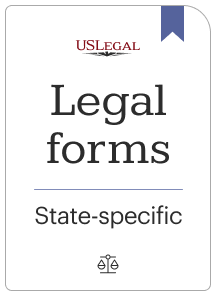

The releasor agrees to release and forever discharge the releasee from any and all claims arising out of or in any way relating to injuries and damages as a result of a particular occurrence. The form provides that the release contains the entire agreement betweeen the parties. The New York General Release of Claims is a legal document that enables individuals or businesses in New York to resolve disputes or potential lawsuits outside of court. It serves as a written agreement between the parties involved, where one party (the releaser) releases the other party (the released) from any present or future claims arising from a specific event, action, or relationship. Key features of a New York General Release of Claims include: 1. Release of Claims: This document explicitly outlines the claims being released. It may cover various types of claims, such as personal injury, property damage, breach of contract, employment issues, or any other legal disputes. By signing the release, the releaser acknowledges that they have no further right to pursue any claims related to the specified matter. 2. Consideration: In exchange for releasing the claims, the releaser often receives some form of consideration, which can be monetary compensation, mutual promises, or other benefits agreed upon by the parties involved. The amount of consideration should be clearly stated in the release. 3. Waiver of Unknown Claims: The New York General Release of Claims typically includes a provision waiving any unknown or unanticipated claims that may arise in the future related to the specified matter. This ensures that both parties can move forward with certainty and finality, without the fear of additional legal action. 4. Mutuality: The release should be mutually binding, meaning that both parties release each other from any claims or liabilities. This ensures that all potential claims related to the particular event or agreement are extinguished, protecting the interests of both parties. Different types of New York General Release of Claims: 1. Personal Injury Release: This type of release is commonly used in situations where an individual has suffered injuries due to someone else's negligence or intentional actions. By signing the release, the injured party relinquishes all claims against the responsible party, typically in exchange for a settlement amount. 2. Employment Release: This release is specific to employer-employee relationships. It is often used when a terminated employee agrees to release all claims against the employer, including wrongful termination, discrimination, or harassment allegations, in exchange for certain benefits like severance pay, continued health benefits, or a positive reference. 3. Contractual Release: A contractual release is used when parties seek to settle contractual disputes amicably. It releases both parties from any claims resulting from the breached terms or other issues related to the contract. It is important to note that the above descriptions provide a general understanding of the New York General Release of Claims and its various types. However, it is always recommended consulting with a qualified attorney to ensure the release conforms to specific legal requirements and adequately protects the interests of all parties involved.
The New York General Release of Claims is a legal document that enables individuals or businesses in New York to resolve disputes or potential lawsuits outside of court. It serves as a written agreement between the parties involved, where one party (the releaser) releases the other party (the released) from any present or future claims arising from a specific event, action, or relationship. Key features of a New York General Release of Claims include: 1. Release of Claims: This document explicitly outlines the claims being released. It may cover various types of claims, such as personal injury, property damage, breach of contract, employment issues, or any other legal disputes. By signing the release, the releaser acknowledges that they have no further right to pursue any claims related to the specified matter. 2. Consideration: In exchange for releasing the claims, the releaser often receives some form of consideration, which can be monetary compensation, mutual promises, or other benefits agreed upon by the parties involved. The amount of consideration should be clearly stated in the release. 3. Waiver of Unknown Claims: The New York General Release of Claims typically includes a provision waiving any unknown or unanticipated claims that may arise in the future related to the specified matter. This ensures that both parties can move forward with certainty and finality, without the fear of additional legal action. 4. Mutuality: The release should be mutually binding, meaning that both parties release each other from any claims or liabilities. This ensures that all potential claims related to the particular event or agreement are extinguished, protecting the interests of both parties. Different types of New York General Release of Claims: 1. Personal Injury Release: This type of release is commonly used in situations where an individual has suffered injuries due to someone else's negligence or intentional actions. By signing the release, the injured party relinquishes all claims against the responsible party, typically in exchange for a settlement amount. 2. Employment Release: This release is specific to employer-employee relationships. It is often used when a terminated employee agrees to release all claims against the employer, including wrongful termination, discrimination, or harassment allegations, in exchange for certain benefits like severance pay, continued health benefits, or a positive reference. 3. Contractual Release: A contractual release is used when parties seek to settle contractual disputes amicably. It releases both parties from any claims resulting from the breached terms or other issues related to the contract. It is important to note that the above descriptions provide a general understanding of the New York General Release of Claims and its various types. However, it is always recommended consulting with a qualified attorney to ensure the release conforms to specific legal requirements and adequately protects the interests of all parties involved.